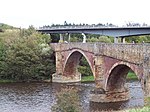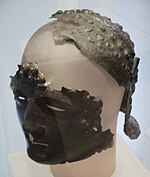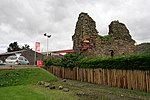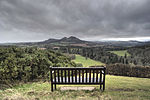St Andrew's College, Drygrange
1953 establishments in Scotland1986 disestablishments in Scotland1986 disestablishments in the United KingdomCategory B listed buildings in the Scottish BordersCatholic seminaries in Scotland ... and 7 more
Defunct Catholic schools in ScotlandDefunct universities and colleges in ScotlandEducational institutions disestablished in 1986Educational institutions established in 1953Listed schools in ScotlandSchools in the Scottish BordersUse British English from January 2014

St Andrew's College, Drygrange, located near Melrose, Scotland, was a Roman Catholic seminary founded in 1953 and closed in 1986.
Excerpt from the Wikipedia article St Andrew's College, Drygrange (License: CC BY-SA 3.0, Authors, Images).St Andrew's College, Drygrange
Leader Water Path,
Geographical coordinates (GPS) Address External links Nearby Places Show on map
Geographical coordinates (GPS)
| Latitude | Longitude |
|---|---|
| N 55.610935 ° | E -2.671984 ° |
Address
Drygrange Hall
Leader Water Path
TD6 9DH
Scotland, United Kingdom
Open on Google Maps









